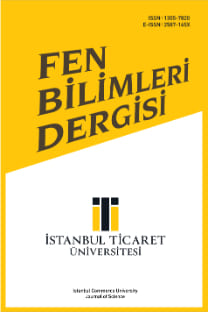YALIN FELSEFE ve BİR OTOMOTİV YAN SANAYİ UYGULAMASI
Yalın Üretim, Kanban, Poka-yoke, Kaizen
YALIN FELSEFE ve BİR OTOMOTİV YAN SANAYİ UYGULAMASI
Lean Production, Kanban, Poke-yoke, Kaizen,
___
- Abdulmalek, F. A. ve Rajgopal, J., 2007. Analyzing The Benefits of Lean Manufacturing and Value Stream Mapping via Simulation: A Process Sector Case Study. International Journal of Production Economics., 107, 223-236.
- Durmusoğlu, M. B, 2005. Grup Teknolojisi ve Esnek Üretim Dersi, Ders Notları, İstanbul Teknik Üniversitesi., İstanbul.
- Edwards, D. K., Edgell, R. C. ve Richa, C. E., 1993. Standard Operations – The Key to Continuous Improvement in a Just-In-Time Manufacturing System. Production and Inventory Management Journal, Vol: 34, No.3, pp. 7-13.
- Gunay K., Cetin T. ve Baykoc O.F. (2004) Montaj Hattı Dengelemede Geleneksel ve U Tipi Hatların Karsılastırılması ve Bir Uygulama", Teknoloji, 3:351- 359 Ignall, E.J. (1965) A Review of Assembly Line Balancing" Journal of Industrial Engineering, 16:4
- Management Science, 40: 1378-1388
- Monden, Y. (1998) Toyota Production System - An Integrated Approach to JustinTime, 3rd ed. Kluwer, Dordrecht
- ISSN: 1305-7820
- Yayın Aralığı: 2
- Başlangıç: 2002
- Yayıncı: Doç. Dr. Necip Şimşek
Şeyda CANBOLAT, Kamil ACAR, Nigar MERDAN
GELENEKSEL SAFRANBOLU EVLERİNİN SÜRDÜRÜLEBİLİRLİK AÇISINDAN DEĞERLENDİRİLMESİ
YALIN FELSEFE ve BİR OTOMOTİV YAN SANAYİ UYGULAMASI
Tijen Över ÖZÇELİK, Fırat CİNOĞLU
KALİTE VE MİKTAR BELİRSİZLİKLERİ ALTINDA GERİ DÖNÜŞÜM AĞ TASARIMI
YAYIN KOŞULLARI VE YAZIM KURALLARI
INVESTIGATION OF STREETS AND PEDESTRIAN MALLS AS PUBLIC SPACES
